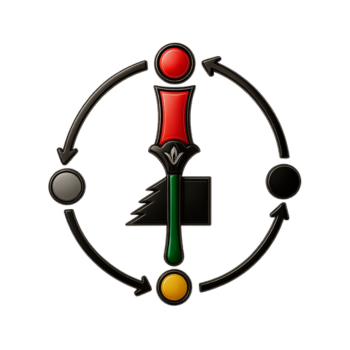-
Tsie-badimo
That’s a Sesotho word. In English it translates to “Locust-Gods”. Now, I don’t know what Locust-Gods is but I do know Tsie-badimo. Badimo is ancestors. So, what is the ancestor of a locust? I’m sure I don’t know, which is exactly the point. Tsie-badimo is something that does not exist, in the sense of something that one invents out of thin air. For example, to say kmt refers soil quality/colour, or some kind of land, and not Black People/Nation is tsie-badimo. I’m not a linguist and I don’t know Medew Meter, but the TLA is there. So, what is this tsie-badimo people speak when they say that “Drop assumed” and things of that nature? Km.t with another symbol said to represent a “village” or “town”. What is a village? Village (to me) is where people are, people of a certain characteristics, e.g. Zulu village, Basotho village or even Black village etc. Zulu and Basotho are people, Black people exactly. So when I go to a Basotho village, is someone going to tell me that I am going to black village bcos of the quality/colour of the soil? A village is made up of people, whether Zulus or Basotho or otherwise, not the color of the soil or the type of irrigation system that is there – not knowing if that irrigation system was created by the quality/color of the soil or not – people create irrigation system, they define a village. What is so hard about that? Was the entire ancient egypt full of black soil everywhere that it made people there look white?
 Kwabena and NonMwenSe2 Comments
Kwabena and NonMwenSe2 Comments-
White people are trying to claim the highest civilization in the ancient world for themselves. The sculptures, drawings and paintings easily prove that there were no white peoples in ancient Kmt, during the height of ancient Kmt civilization. White people are going to use
Tsie-badimo to proof something that does not exist.
-
Yes. Exactly. They are talking “tsie-badimo”; to convince them otherwise will be, as Sepedi depicts it, to try to convince the locust-god
-

